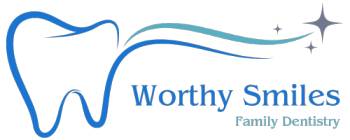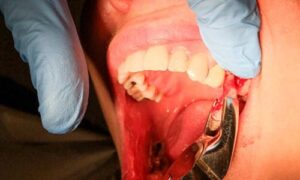Introduction:
Gum boils, also known as gum abscesses, are pockets of pus that form in the gums due to bacterial infection. They can vary in size and severity, causing discomfort and potentially leading to complications if left untreated. This article will explore the different types of gum boils and their effects on teeth.
What are Gum Boils?
Gum boils are localized collections of pus that develop in the gums. Bacterial infections from poor oral hygiene, gum disease, or dental procedures typically cause them. The bacteria infect the gum tissue, leading to inflammation, swelling, and the formation of a painful bump filled with pus.
What Causes Gum Boils?
The main culprit behind gum boils is bacteria. When plaque (the sticky film that builds up on teeth) isn’t brushed and flossed away regularly, it hardens into tartar (calculus). This creates a breeding ground for bacteria, which can burrow into the gums and cause an infection. This infection leads to the formation of a pus-filled pocket, which is the gum boil.
Here are some other factors that can increase your risk of gum boils:
- Poor dental hygiene: Brushing twice daily and flossing daily are essential to prevent plaque buildup and gum infections.
- Gum disease (gingivitis and periodontitis): Untreated gum disease can weaken the gum tissue and make it more susceptible to infection.
- Cracked or chipped teeth: Cracks and chips in teeth can provide an entry point for bacteria to reach the pulp (the inner part of the tooth) and cause an infection.
- Injury to the gums: Injuries from hard foods, aggressive brushing, or dental procedures can create openings for bacteria to enter the gums.
The Three Types of Gum Boils
Gum boils can be categorized into three main types depending on their location:
-
Gingival Abscess:
This is the most common type of gum boil. It forms near the gum line, usually next to a tooth. Gingival abscesses often occur due to poor dental hygiene, allowing plaque and bacteria to build up between the tooth and gum.
Symptoms of a gingival abscess:
- A small, red, pimple-like bump on the gumline
- Pain when touching the bump
- Tenderness and swelling in the gums
- Bad breath (halitosis)
- Slight bleeding from the gums
-
Periapical Abscess:
This gum boils from the tip of the tooth root, deep within the jawbone. It typically arises from an untreated cavity or tooth infection that spreads to the root and surrounding bone. Periapical abscesses can be quite painful and require prompt dental attention.
Periapical abscess Symptoms:
- Throbbing pain in the tooth and surrounding jawbone
- Sensitivity to hot and cold foods and drinks
- Facial swelling
- Swollen lymph nodes in the neck
- Fever
-
Periodontal Abscess:
This type of gum boil develops between the tooth and the bone that supports it (alveolar bone). It often occurs in people with advanced gum disease (periodontitis), where deep pockets form between the teeth and gums, trapping bacteria and pus.
Symptoms of a periodontal abscess:
- A red, swollen bump on the gums between two teeth
- Pain when chewing or biting
- Pus draining from the boil
- Loose teeth
- Bad breath
Effects on Teeth: Gum boils can have several adverse effects on teeth, including:
- Tooth Mobility: Severe gum abscesses, particularly those involving the supporting structures of the teeth, can lead to tooth mobility or loosening.
- Tooth Loss: If left untreated, gum boils can result in the loss of affected teeth due to extensive damage to the surrounding tissues and bone.
- Spread of Infection: Untreated gum abscesses can spread infection to neighboring teeth, gums, and even other body parts through the bloodstream, potentially leading to systemic complications.
Treating Gum Boils
If you suspect you have a gum boil, it is crucial to see a dentist as soon as possible. Early diagnosis and treatment can prevent the infection from spreading and causing further complications.
Here are some common treatment options for gum boils:
- Drainage: The dentist will numb the area and carefully drain the pus from the boil.
- Antibiotics: Antibiotics may be prescribed to clear the infection, especially for periapical abscesses.
- Dental cleaning: A deep cleaning will remove plaque and tartar buildup, promoting healing and preventing future infections.
- Root canal: If the infection originates from a damaged tooth pulp, a root canal may be necessary to remove the infected tissue and save the tooth.
- Tooth extraction: In severe cases, the dentist may need to extract the tooth if it’s too damaged to be saved.
Preventing Gum Boils
The best way to deal with gum boils is to prevent them in the first place. Here are some essential practices for healthy gums and teeth:
- To maintain good oral hygiene, Brush your teeth twice a day for two minutes each time and floss daily.
- Regular dental checkups and cleanings: Visit your dentist for checkups and cleanings at least every six months or more often if recommended.
- Eat a healthy diet: Limit sugary and processed foods contributing to plaque buildup.
- Don’t smoke: Smoking weakens the immune system and increases your risk of gum disease.
By following these tips and seeking prompt dental attention if you experience gum problems, you can keep your smile healthy and avoid the discomfort of gum boils.
Conclusion:
Gum boils are painful and potentially serious dental conditions that require prompt treatment to prevent complications and preserve oral health. By understanding the types of gum boils and their effects on teeth, individuals can take proactive steps to maintain healthy gums and prevent infections. Remember to prioritize good oral hygiene habits and seek professional dental care if you experience any signs or symptoms of gum abscesses.
While gum disease can affect anyone, according to the American Academy of Periodontology, aggressive periodontitis, which can lead to gum boils, is more common in young adults (aged 20-35)
Gum Boils FAQs
Here are some frequently asked questions about gum boils:
Q: Are gum boils contagious?
A: No, gum boils themselves are not contagious. However, the bacteria that cause them can spread through saliva, so it’s best to avoid sharing utensils or personal items with someone with a gum boil.
Q: Can I treat a gum boil at home?
A: It’s not recommended to treat a gum boil at home. While warm salt rinses can offer temporary relief, they won’t address the underlying infection. A dentist needs to drain the boil and potentially prescribe antibiotics to clear the infection completely.
Q: How long does it take for a gum boil to go away?
A: With proper treatment from a dentist, symptoms of a gum boil can improve within a few days. However, complete healing may take one to two weeks, depending on the severity of the infection.
Q: Can I eat normally with a gum boil?
A: Chewing can be painful with a gum boil. Opt for soft foods like yogurt, mashed potatoes, or soups until the pain subsides.
Q: Will a gum boil go away on its own?
A: No, a gum boil won’t go away. Leaving it untreated can worsen the infection and lead to serious complications.
Q: Can a gum boil cause a tooth to fall out?
A: Yes, especially for periapical abscesses if the infection severely damages the tooth and surrounding bone. Early treatment is crucial to save the tooth.
Q: I’m scared to go to the dentist because of the pain. What should I do?
A: Dentists understand dental anxiety and offer various options to make you feel comfortable during treatment. Talk to your dentist about sedation options like nitrous oxide (“laughing gas”) to help manage anxiety and pain.














